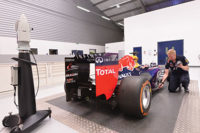Water, water everywhere and not a drop to drink. It’s a famous line from “The Rime of the Ancient Mariner,” uttered by a more-than-thirsty sailor on a ship bereft of fresh water as he is forced to stare at an ocean of sea water he cannot use to satiate his need. And so, I’m sure, has been the sentiment of many a sailor, explorer, or pioneer—really, anyone who was the first to attempt something.
These trailblazers are bound to encounter the unexpected. The lucky and skillful will overcome these obstacles to succeed in their quest. Others would not be so lucky. The luck for us is in those that are able to document their experience for the betterment of humankind, whether they succeed or not.
It’s been said that the greatest achievement of Marco Polo’s travels on the Silk Road in the 13th century was that he was able to return to Europe to document the experience. He described trading and collecting jewels, silk and ivory and told of how the Chinese used coal, money and compasses—which, in addition to the mapping of his journey, would aid future exploration.
Lewis and Clark documented everything on their journey through the territory of Louisiana, including their interactions with Native Americans, plants and animals, as well as climate and terrain, allowing for the future expansion of the country all the way to the Pacific Ocean.
The space program is one of the most highly technical and highly documented endeavors in human history. In order to send astronauts to the moon and beyond, we needed to first successfully launch a rocket, then put astronauts into orbit, and so on. Not only for reasons of documentation but also for more altruistic reasons, it became NASA’s credo to “put a man on the moon and return him safely to Earth.”
And like Polo’s jewels and silks, much came out of the effort to go to space that we all enjoy here on Earth. I’m sure we are all familiar with the commercial successes of Tang and Velcro, both of which were born in the space program, but we can also thank these efforts for camera phones, computed tomography, and LED technology, as well as desalination technology, which I’m sure the sailor in “The Rime of the Ancient Mariner” would have appreciated.
Lucky for us, efforts in our industry to bring the Industrial Internet of Things and robotics to fruition are progressing past just laying the foundation. And many of the pioneers were kind enough to document their efforts. So check out “Robot, Robots, Everywhere!”, “As Automation Grows, Microscopes Evolve” and everything else we have to offer in this month’s Quality.
Enjoy and thanks for reading!



